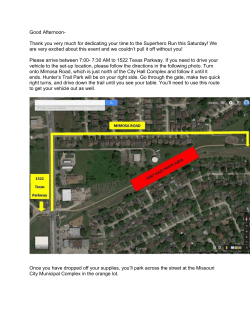
3.3 Vegetation / Erosion
3.3 Vegetation / Erosion Landscaping and erosion control are closely linked goals. Revegetation and planting in native vegetation can be particularly helpful in controlling erosion. Additionally, edging and weeding help to maintain trail width, improve drainage, and prevent pavement heaving (i.e. pop-ups; see p. 31).i Purpose: Control erosion, improve drainage, and protect trail width and surface. Best Practices: Design guidelines and maintenance notes can be found in Indiana Design Manual, Ch. 51, Section 51-8.0 Landscaping.ii The University of Minnesota’s Best Practices handbook on Roadside Vegetation Management covers best practices in vegetation selection and control, mowing policies, snow drift control, and public relations.iii Notes: Berms that build up along the trail edge and uphill slopes should be monitored for erosion onto trails. Environmentally safe solutions should be used for weeding. The proximity of the Ohio River Greenway to the Ohio River and its tributaries means that runoff of herbicides cannot be avoided, so weeding must be done by hand. Similarly, the US Army Corps of Engineers prohibits the use of herbicide on the levee. Planting in low-mow or no-mow vegetation can significantly offset maintenance requirements, saving money and time while reducing environmental impact. i Simpson, Best Practices INDOT, 2013 Design Manual iii Johnson, Best Practices Handbook ii
© Copyright 2025





















